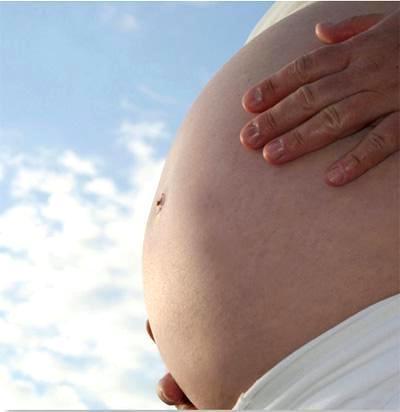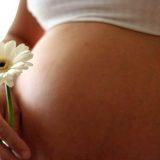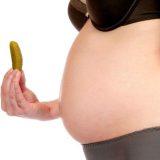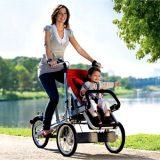Breathing during labor

The value of proper breathing for the whole of our life, health is invaluable.But special breathing during labor that will help, not to be missed now.
Meaning of breathing during labor
Special, correct breathing during labor, you can:
- relieve pain;
- relax your body (thanks to the deep, slow breathing phase);
- saturate the blood with oxygen;
- remove panic from the birth process (slowing breathing).
To maintain the mothers have a right style of breathing is very important to actively participate delivery partner (usually the husband). This can be expressed in the control of your breathing and breathing joint.
How to breathe during labor. General recommendations
In order to get short of breath necessary assistance:
- take control of your breathing – do not let him go freely;
- let your partner breathes leave with you;
- do not stop to breathe without the need, especially during labor (if it is not provided views of breath) – this deprives oxygen you and your child (great assistant can become a husband who will remind: “Breathe!”);
- if you breathe in certain cycles, let partner takes you signals (fingers, for example), how to do breaths;
- Begin and end each fight slowly “Cleansing Breath” (even with strong contractions);
- breathe deeply through your nose when you start a fight, and exhale through the mouth with a gentle flow;
- “Throw” your shoulders down and release tension;
- send mentally my breath where there is tension;
- between contractions breathe naturally;
- if it starts hyperventilating during childbirth, inhale through your nose and exhale more slowly;
- guided by the stages of labor for selecting the type of breathing:
- first brief bout – economical breath (exhale a little longer breaths (inhale for 3 accounts, and exhale – 4) in the beginning of the fight – exhale all the air, slowly breathe in through your nose and slowly exhale through the mouth slightly open, “blow back” tummy, relaxing aperture);
- intense contractions (accelerating breathing 2 times faster than normal rate, and you can breathe, like a dog, begin to breathe slowly and then accelerates to 1 if 2 breaths per second, inhale and exhale – the same, through the nose or mouth slightly open, use breathing with visualization – See below. “Types of breath”);
- the most painful contractions, fetal head becomes a small basin (use different types of breathing: steamer, breathing with the decrease and the growth or 6 cycles – See below. “Types of breath”, when you exhale during this period, you can pull the sound of “a”);
- attempts (use your breath for 7 accounts or breathing “the spark” – See below. “Types of breath”, one exhalation, you can change the sound of “a”, “o”, “u” or just use the sound “s”);
- the beginning of the die exit – attempts to stop, breathe easy;
- output of the placenta (sometimes require the same breath, as in the period of attempts – this need to tell the doctor).
Learning to breathe properly is not always very easy. Courses Maternity offer master breathing with breathing-relaxation training. Learn proper breathing is useful, beginning with the third month of pregnancy. But if after practicing breath you are experiencing painful symptoms or bleeding starts, stop exercise and see your doctor.
Types of breathing:
- breathing with visualization (during intense battles and rapid breathing (2 times more than usual), imagine a sunny meadow or a favorite picture of you, and you can bring some thing that will be positive for you, and look at it);
- steamer (during the most painful contractions, breath in through your nose and exhale through the very long folded tube sponges, cheeks relaxed);
- breathing with the decrease and increase in the (at the time of the most painful contractions; 5 breaths and exhale through one tube sponge (blowing), then 4 breaths and blowing, 3 breaths and blowing, 2 breaths and blowing, 1 breath -vydoh and blowing, and then breathe on the rise up to 5);
- breath for 6 cycles (during the most painful contractions; 6 breaths, blowing 1 – repeat until the end of the fight);
- breath for 7 accounts (during attempts 2 times in and out breath, hold your breath, tuzhtes 7 accounts, release the air, breath and exhale a little, hold your breath, tuzhtes 7 accounts);
- breathing “on the candle” (during attempts; exactly exhale as if blowing on a burning candle, but wanting only to bend down a little flame (you can with audio), heave, pressing on the pelvis, breathe deeply and evenly, repeat breath; this kind of breathing particularly useful for those who have problems with the eyes).
Breathing exercises
To be able to correctly perform all kinds of breathing, you will need to be able to properly breathe in and out, use their breathing capabilities. For this purpose we work out before the birth or even before the beginning of the pregnancy itself:
- breathing exercises “deep breathing” or “cleansing breath” (lie down on its side or lie down, sitting up a little, half-sitting, put his hand on his stomach, breathe slowly, filling the stomach and not holding my breath, slowly exhale, rest a few seconds and repeat the cycle);
- breathing exercises “sponge tube” (take a comfortable position, for example, as described above, slowly breathe in through your nose and exhale completely through the air tube with sponge relaxed cheeks);
- breathing exercises “relaxation” (breathe slowly for 3-4 accounts and exhale slowly for 3-4 accounts);
- breathing exercises “hee-hee-hoo” (do “cleansing breath” breathe faster usually 2-4 times with the sounds of “hee-hee” and then forcefully blown at the sound of “hu” – repeat for 1.5 minutes; finish “cleansing breath”);
- breathing exercises “blow” (do “cleansing breath” breathe quietly through the nose, exhale through the mouth quietly – do all this 1.5 minutes and finish “cleansing breath”);
- breathing exercises “light wind” (do “cleansing breath” breathe 3-5 accounts by the same accounts exhale and relax, omit the Jaw, shoulders, continue about 1.5 minutes, finish “cleansing breath”).
Many mothers who did not spend time on the development of breath during the first pregnancy, while the second will certainly take up the breathing techniques. And it is better to believe in it in advance of the first birth. All expectant mothers – good luck and easy breathing!













